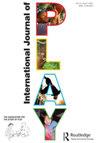狼幼犬客体游戏的发展
IF 1.2
Q3 EDUCATION & EDUCATIONAL RESEARCH
引用次数: 1
摘要
关于狼幼崽客体游戏发展的研究还很缺乏。比较狼和狗可以帮助梳理驯化对狼和各种狗品种之间发现的任何差异的影响。我们研究了2窝人工饲养的狼幼崽(Canis lupus)在2 - 9周龄(14-63天)的物体游戏发展情况。研究人员在周中和周中的时间点对两窝幼崽进行了录像。每一窝狗都被给予一套不同的玩具,这些玩具是由5个相同的商业狗(Canis lupus familiaris)组成的,但它们的感官和功能品质不同。使用Noldus Observer XT程序和先前开发的对象相关行为谱分析每个会话的前10分钟活动。采用重复测量LMMs对结果进行分析。狼崽玩玩具的时间百分比、行为数量和行为多样性都随着年龄的增长而显著增加,而且它们通常比小狗发育得更快。狼和狗一样,对某些玩具也有偏好。这些发现扩大了我们对狼幼崽行为、犬科动物客体游戏的比较发展的理解,并为驯化对游戏行为的研究提供了一个模型。本文章由计算机程序翻译,如有差异,请以英文原文为准。
The development of object play in wolf puppies (Canis lupus)
ABSTRACT Studies exploring the development of object play of wolf pups are lacking. Comparisons of wolves vs. dogs can aid in teasing out the influences of domestication on any differences uncovered between wolves and various dog breeds. We investigated the development of object play from 2 to 9 weeks of age (14–63 days) in 2 litters of hand-reared wolf pups (Canis lupus). Both litters of pups were video-recorded in their home enclosures at week and mid-week timepoints. Each litter was given a separate set of the same five commercial dog (Canis lupus familiaris) toys with differing sensory and functional qualities. The first 10 min of activity from each session were analyzed using the Noldus Observer XT program and a previously developed ethogram of object related behaviors. The results were analyzed using repeated measures LMMs. Percent of time spent playing with toys, behavioral counts and behavioral diversity all increased significantly with age for wolf pups, and they were generally developmentally ahead of dog puppies. Wolves, like dogs, had preferences for some toys. These findings expand our grasp of infant wolf behavior, the comparative development of object play in canines, and provide a model for the study of domestication on play behavior.
求助全文
通过发布文献求助,成功后即可免费获取论文全文。
去求助
来源期刊

International Journal of Play
Social Sciences-Cultural Studies
CiteScore
1.90
自引率
20.00%
发文量
60
期刊介绍:
The International Journal of Play is an inter-disciplinary publication focusing on all facets of play. It aims to provide an international forum for mono- and multi-disciplinary papers and scholarly debate on all aspects of play theory, policy and practice from across the globe and across the lifespan, and in all kinds of cultural settings, institutions and communities. The journal will be of interest to anthropologists, educationalists, folklorists, historians, linguists, philosophers, playworkers, psychologists, sociologists, therapists and zoologists.
 求助内容:
求助内容: 应助结果提醒方式:
应助结果提醒方式:


